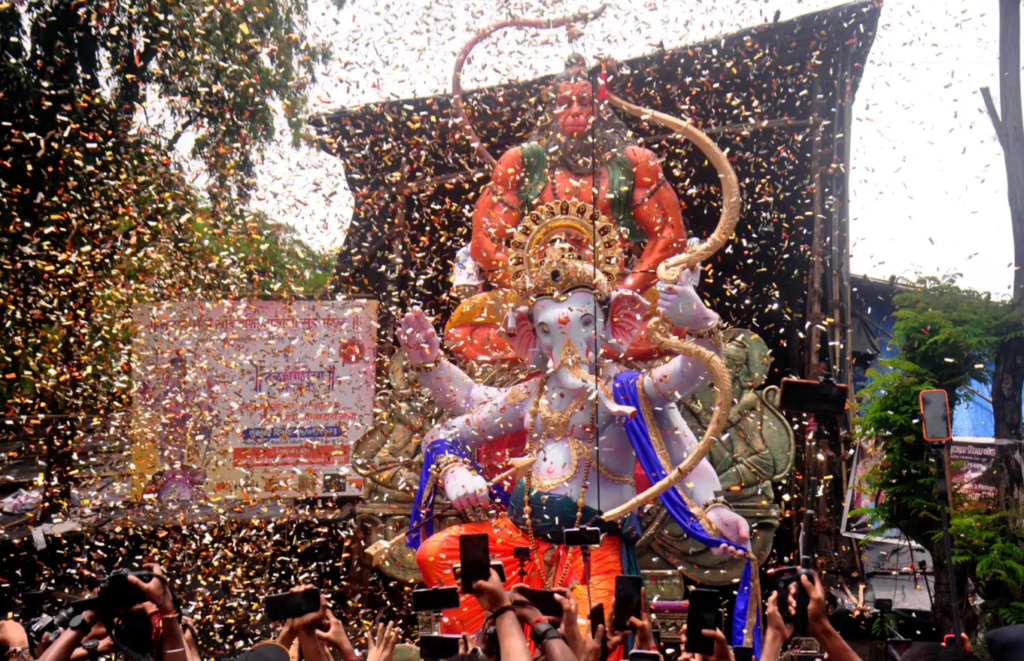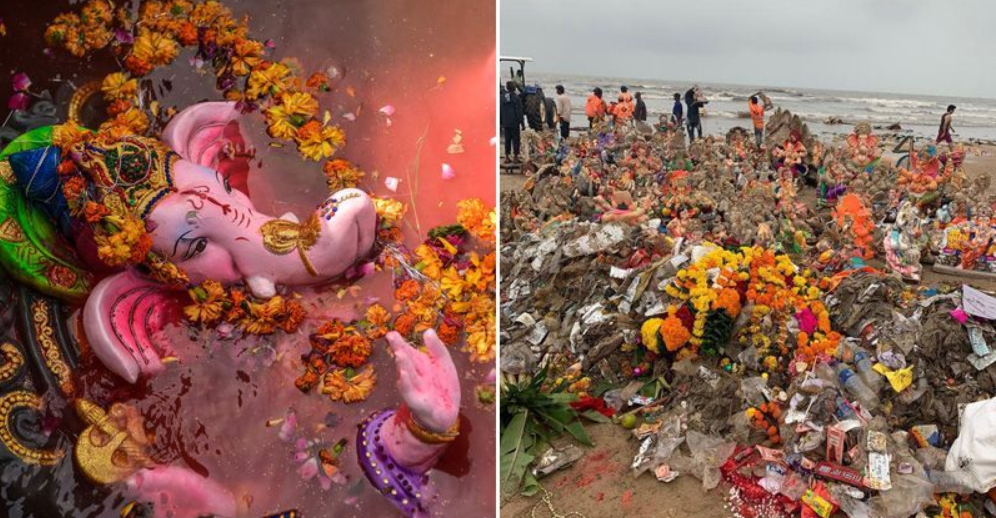Ganesh Chaturthi: A Celebration of Wisdom, Prosperity, and Community
Ganesh Chaturthi is a major Hindu festival celebrated across India, especially in Maharashtra, Karnataka, Gujarat, Andhra Pradesh, and Tamil Nadu. It marks the birth of Lord Ganesha, the elephant-headed god of wisdom, prosperity, and good fortune. The festival typically falls between August and September, depending on the Hindu lunar calendar.
Chaturthi Tithi : 6 September
Ganesh Visarjan : 17 September

Historical Significance
Ganesh Chaturthi has been celebrated for centuries, with references in ancient texts and scriptures like the Rigveda. During India’s freedom struggle, Bal Gangadhar Tilak transformed it into a public event to unite people against British rule. Before this, it was largely a private celebration in homes. Tilak encouraged large-scale, public celebrations in Maharashtra, fostering a sense of community.
Mythological Importance
Lord Ganesha is the son of Lord Shiva and Goddess Parvati. According to Hindu mythology, Ganesha was created by Parvati out of sandalwood paste to guard her while she bathed. When Shiva returned and tried to enter, Ganesha, not knowing who he was, stopped him. In a fit of rage, Shiva beheaded him. To appease a grief-stricken Parvati, Shiva replaced Ganesha’s head with that of an elephant, reviving him.

The Festival
The celebration of Ganesh Chaturthi usually lasts for 10 days, starting on the fourth day (Chaturthi) of the Hindu month of Bhadrapada. The festival begins with the installation of clay idols of Lord Ganesha in homes or public pandals (temporary structures). These idols are beautifully decorated, and special rituals like pujas and aartis are performed to invoke the deity’s blessings.
Key Rituals
- Pranapratishtha: This ritual involves invoking life into the Ganesha idol.
- Shodashopachara: Sixteen forms of reverence are offered to Lord Ganesha, including offerings of flowers, sweets, coconut, and the popular sweet “modak” (Ganesha’s favorite).
- Vedic Hymns: Devotees chant Vedic hymns and Ganesha mantras throughout the festival.
- Visarjan: On the last day, the idol is taken in a grand procession to nearby water bodies and immersed in a symbolic farewell. Devotees chant “Ganpati Bappa Morya, Pudhchya Varshi Lavkar Ya,” which translates to “O Lord Ganesha, come again next year.”
Public Celebrations
In cities like Mumbai and Pune, huge processions take place, with large-scale celebrations and elaborate Ganesha idols that can reach heights of over 20 feet. Cultural programs, dances, music, and plays are also held during the festival.
Environmental Impact
Over the years, concerns have been raised about the environmental impact of Ganesh Visarjan, particularly the pollution caused by plaster-of-Paris idols. In response, eco-friendly clay idols and natural dyes are being promoted. Some communities have also adopted artificial tanks for immersion to prevent pollution of natural water bodies.

Social and Cultural Importance
Ganesh Chaturthi is more than just a religious festival. It has become a platform for social and cultural gatherings. Communities come together to celebrate with enthusiasm, breaking barriers of caste and creed. It also serves as an occasion to promote social causes, such as environmental awareness, education, and unity.
Global Celebrations
Apart from India, Ganesh Chaturthi is celebrated by the Indian diaspora in countries like the UK, USA, Canada, and Australia. In Mauritius, Nepal, and Indonesia, where Hindu communities exist, the festival is also marked with devotion.
Conclusion
Ganesh Chaturthi is a vibrant, spiritual, and culturally rich festival that honors the wisdom and virtues of Lord Ganesha. It embodies a deep sense of community, tradition, and faith, making it one of the most anticipated and joyful festivals in India.
Related
Ganesh Chaturthi 2024: Know city-wise puja timings, Visarjan date
for more news comingglobe.com









